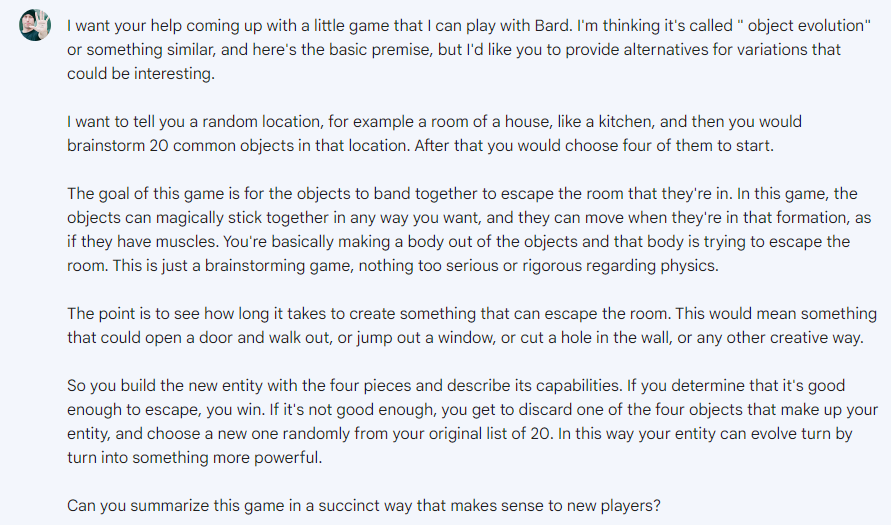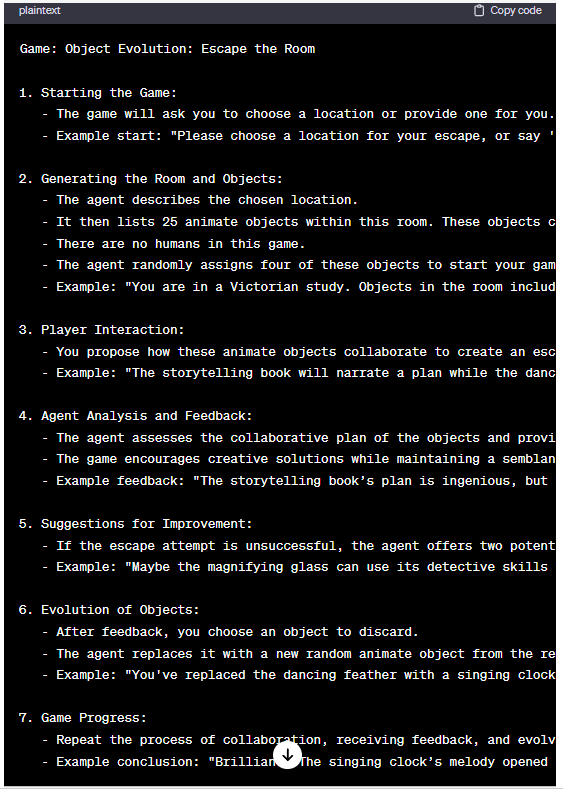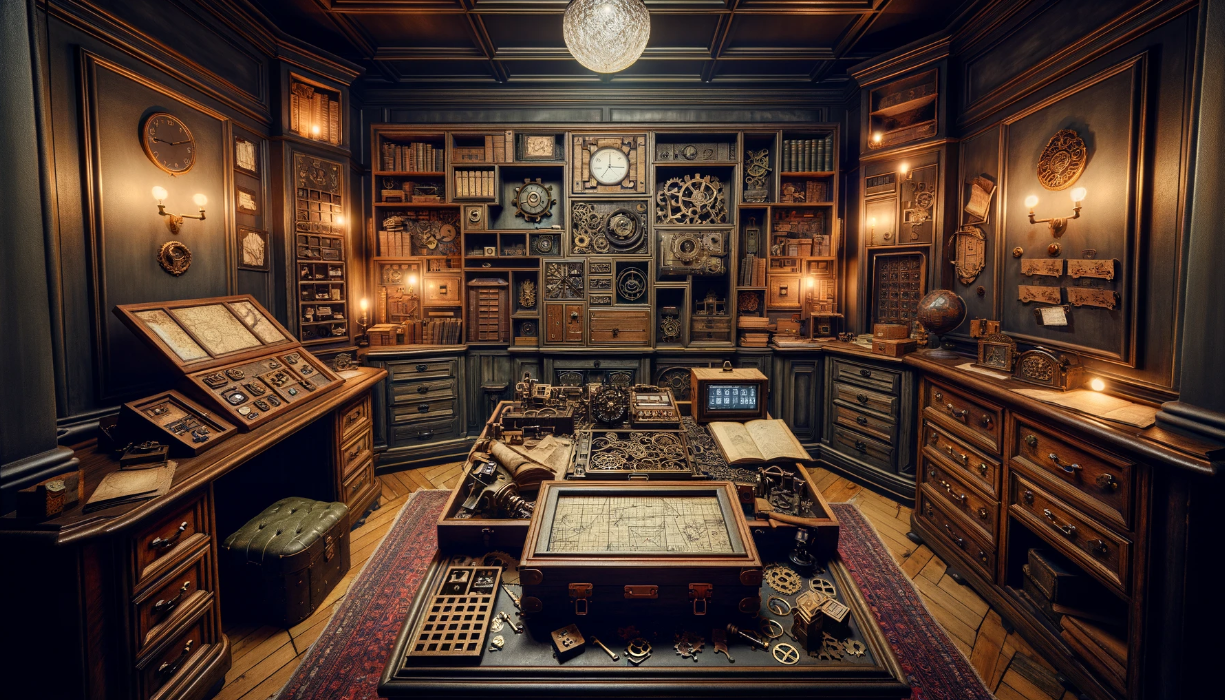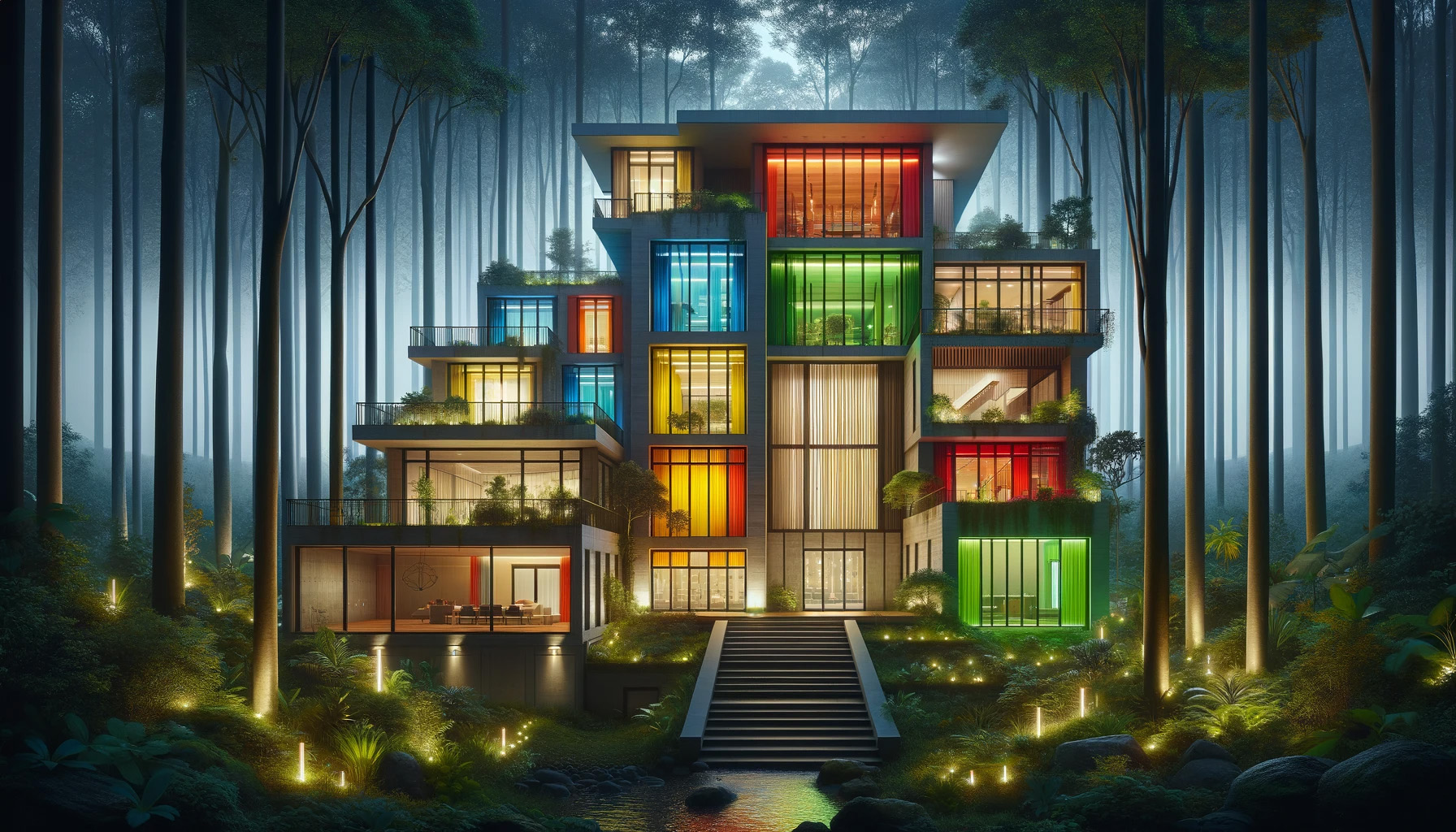Sometimes when I have a silly little idea for a custom GPT, I’ll go ahead and build it out quickly just to get some practice in and see if I can learn something. That’s what I did this morning with this conversational game. I figured I’d write it up because it provides a good example of how quickly you can go from an idea in your head to a working model of something that’s at least 27% fun.
Try out the game before reading: Escape Room: Animated Objects
Caveats: (1) right now you can only see this if you have a ChatGPT Plus subscription | (2) this game may bug out on you – it’s just a quick and dirty beta for demo purposes, not polished.
FYI, the point of this little game is just to warm up your mind a little bit before starting work for the day. Something to get you thinking creatively before you get down to the real business.
So here’s how it went:
In my dream I was helping some objects escape a room. Don’t ask me why, it was just a dream. As I woke up, still lying in bed, I decided to talk (voice to text) to Gemini-powered Bard to start outlining the game. I’m going to include everything I did through Bard and ChatGPT-4 in this post so you can see all the steps from start to finish. The whole project took about an hour and 15 minutes.
As always, please forgive any mistakes, poorly formed sentences, or typos as I talk.

From here I’ll just give you the complete conversation I had with Bard, which got us to the point where I played a round of the game and was able to get my little object guys to escape the room (by throwing a microwave against a window to break it, and then banding together to form a helicopter-type contraption and fly out the broken window).
— Entire Google Bard conversation — (pro tip: you can continue this conversation on your own Bard account and evolve the build)
Once I had gotten a somewhat playable version of the game working, I asked Bard to give me a detailed summary of the mechanism, and then wrap more language around the summary, asking ChatGPT to provide custom instructions to a custom conversational agent so I could build out the custom GPT for the public to play.
It did that successfully, so now we switch over to the ChatGPT interface for the second half of the build.
— Entire ChatGPT conversation —
You’ll notice in here one of the problems I’ve run into a few times when building these custom GPTs – if you call it a “custom agent” it goes into this whole complex thing about how to build a custom GPT, which, if you’re new to the game, will really throw you off. But the problem is that it’s thinking you want to create a whole-ass, fully functional game agent in Python. If it starts throwing all that at you when you try your own builds, just tell it you’re only looking to create a conversational agent using GPT-4, and it’ll know what you mean.
So I got it to the point where it was ready to spit out some custom instructions (in code form) that I could input into the custom agent build. Started looking like this:

From there I went to work inside the custom GPT build screen, and it took me a little trial and error to get it to play the game how I wanted, and also to give the user the instructions at the top of the game when it boots (to accomplish this, I added a conversation starter button saying “tap here to begin” which starts the game and outputs the instructions.
After a bit of messing around, I got it to the point that it’s a playable little text-based game where you make up silly scenarios about objects banding together to escape a room, with a slightly judgmental and overzealous AI telling you why your plan will or won’t work.
Hope it’s kind of fun to mess around with, and that it gives you a behind-the-scenes look at how to quickly draft a working model! Also, I’m only a month into AI myself, so if you have any tips or tricks for me as I learn, feel free to drop ’em in the comments.
Again, you can play it here: Escape Room: Animated Objects (but if it bugs, don’t complain!)
—–


